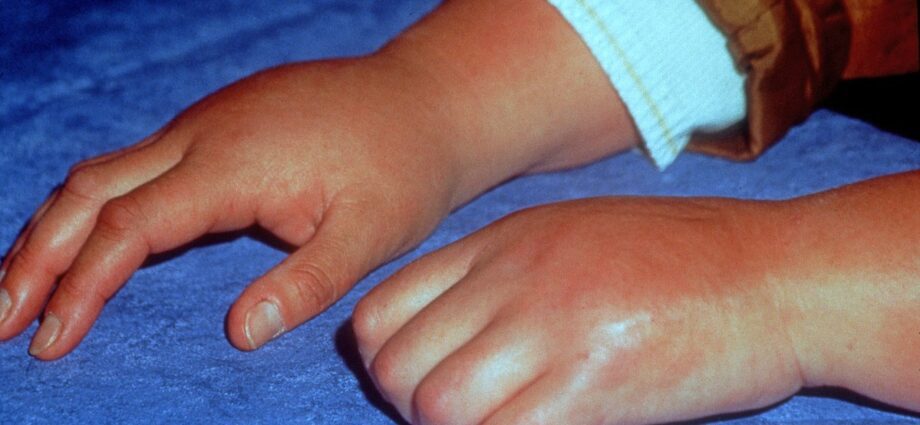Contents
Algoneurodysyrophie
Algoneurodystrophy or algodystrophy is the old name for Complex Regional Pain Syndrome (CRPS). Its treatment is based on physiotherapy and drugs to relieve pain and preserve joint mobility.
Algoneurodystrophy, what is it?
Definition
Algoneurodystrophy (usually referred to as algodystrophy and now called Complex Regional Pain Syndrome) is a regional pain syndrome localized around one or more joints, which associates continuous pain with exaggerated sensitivity to a painful stimulus or a painful sensation to a stimulus. not painful), progressive stiffness, vasomotor disorders (excessive sweating, edema, skin color disturbances).
The lower limbs (especially the foot and ankle) are more affected than the upper limbs. Algodystrophy is a benign disease. It regresses in the majority of cases within a few weeks to a few months but the course can be prolonged over 12 to 24 months. Most often, it heals without sequelae.
Causes
The mechanisms of algodystrophy are not known. It could be a dysfunction of the central and peripheral nervous system.
There is most often a triggering factor: traumatic causes (sprain, tendonitis, fracture, etc.) or non-traumatic causes (osteoarticular causes such as carpal tunnel syndrome or inflammatory rheumatism; neurological causes such as stroke; oncological causes; neurological causes such as phlebitis, infectious causes such as shingles, etc.) Surgery, especially orthopedic, is also a common cause of algoneurodystrophy.
Trauma is the most common cause of Algoneurodystrophy or Complex Regional Pain Syndrome. There is a delay of a few days to a few weeks between the trauma and the dystrophy.
In 5 to 10% of cases there is no triggering factor.
Diagnostic
The diagnosis of Algoneurodystrophy or Complex Regional Pain Syndrome is based on examination and clinical signs. International diagnostic criteria are used. Additional examinations can be performed: x-ray, MRI, bone scintigraphy, etc.
The people concerned
Complex Regional Pain Syndrome is rare. It occurs most often between 50 and 70 years but is possible at any age while being exceptional in children and adolescents. CRPS affects more women than men (3 to 4 women for 1 man).
Symptoms of Algoneurodystrophy
Pain, the main symptom
Algoneurodystrophy is signaled by continuous pain, with hyperalgesia (exaggerated sensitivity to a painful stimulus) or allodynia (painful sensation to a non-painful stimulus); progressive stiffening; vasomotor disorders (excessive sweating, edema, skin color disorders).
Three phases are described: a so-called hot phase, a so-called cold phase then healing.
A hot inflammatory phase …
A first so-called hot phase progresses gradually over a few weeks to a few months after the triggering factor. This hot inflammatory phase is characterized by joint and periarticular pain, edema (swelling), stiffness, local heat, excessive sweating.
… then a cold phase
This is characterized by a cold limb, smooth, pale, ashy or purplish skin, very dry, capsuloligamentous retractions and joint stiffness.
Algoneurodystrophy or Complex Pain Syndrome can actually present with a cold phase from the start or an alternation of cold and hot phases.
Treatments for algoneurodystrophy
The treatment aims to relieve pain and preserve joint mobility. It combines rest, physiotherapy and analgesic drugs.
Kinésithérapie
During the hot phase, the treatment combines rest, physiotherapy (physiotherapy for analgesia, balneotherapy, circulatory drainage).
During the cold phase, physiotherapy aims to limit capsuloligamentous retractions and fight against joint stiffness.
In case of involvement of the upper limb, occupational therapy is necessary.
Analgesic drugs
Several drug treatments can be combined: class I, II analgesics, anti-inflammatory drugs, regional blocks with anesthetics, transcutaneous electrical nerve stimulation (TENS).
Biphosphates can be given intravenously for severe dystrophy.
Orthotics and canes can be used for pain relief.
Prevention of algoneurodystrophy
It would be possible to prevent Algoneurodysyrophy or Complex Regional Pain Syndrome after orthopedic or traumatic surgery by better managing the pain, limiting the immobilization in a cast and implementing progressive rehabilitation.
A recent study showed that taking vitamin C at a dose of 500 mg daily for 50 days decreased the rate of complex regional pain syndrome one year after a wrist fracture. (1)
(1) Florence Aim et al, Efficacy of vitamin C in preventing complex regional pain syndrome after wrist fracture: systematic review and meta-analysis, Hand Surgery and Rehabilitation, volume 35, Issue 6, December 2016, page 441










